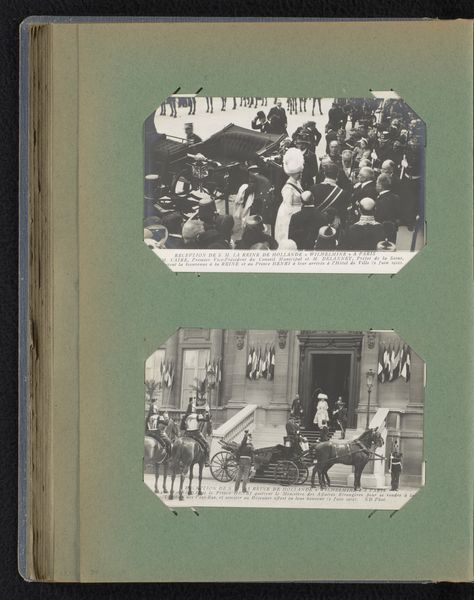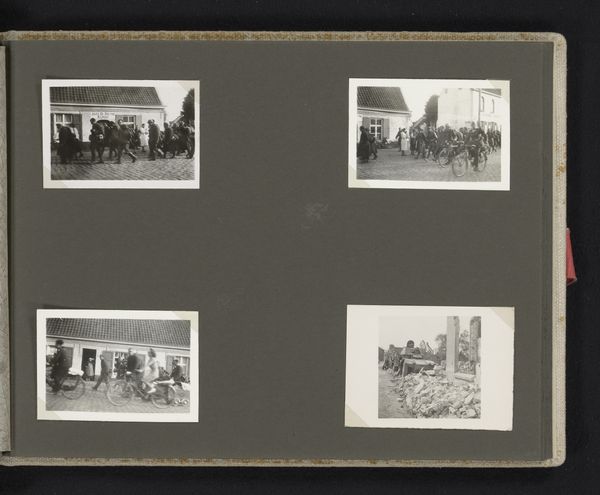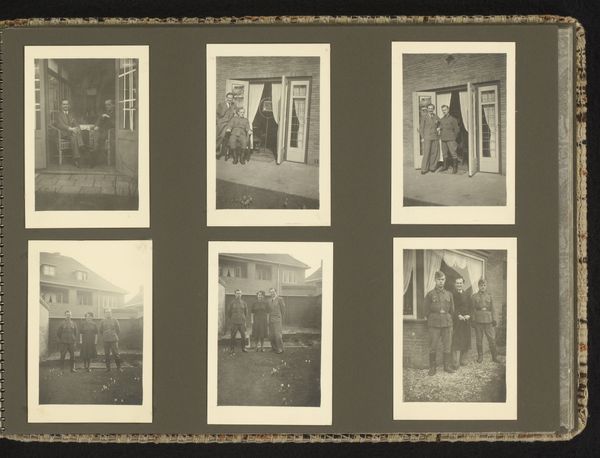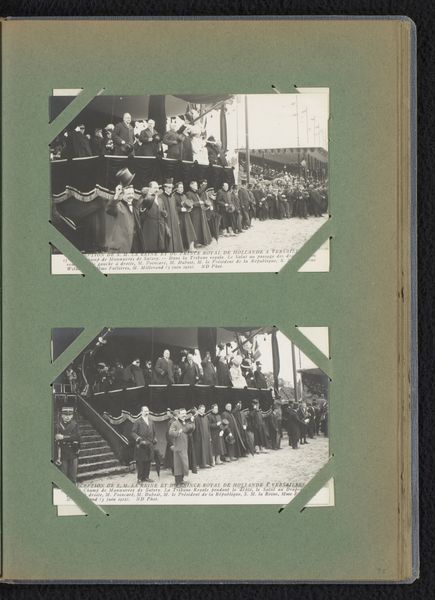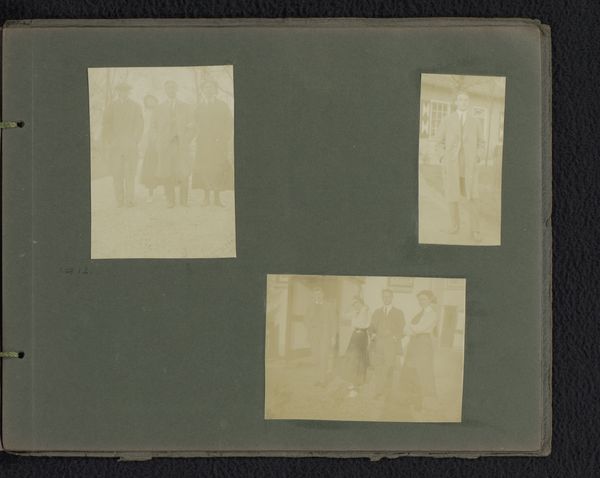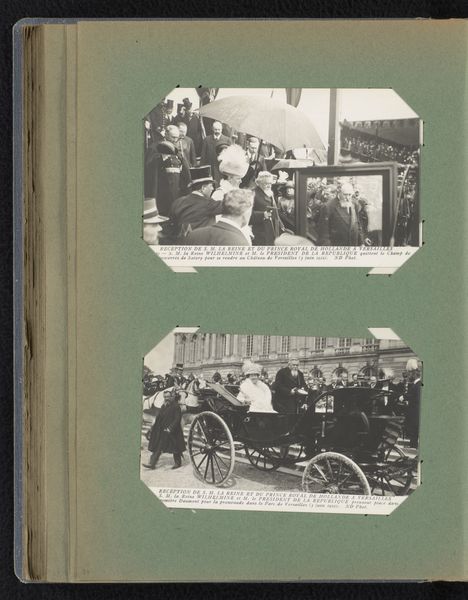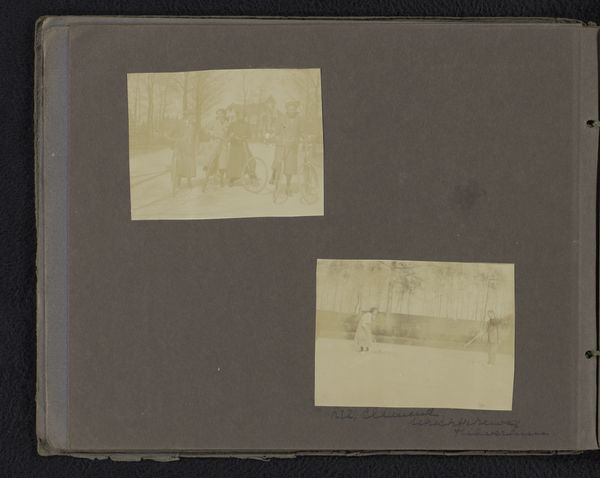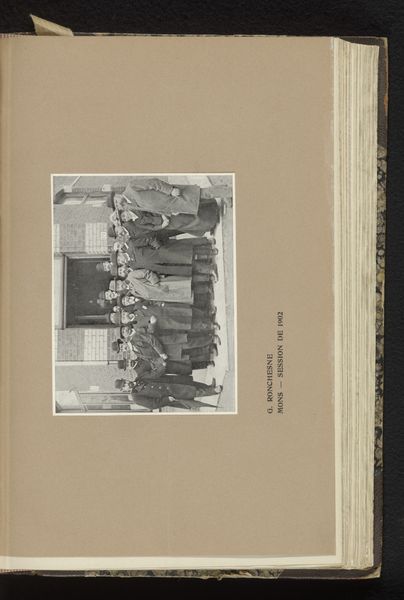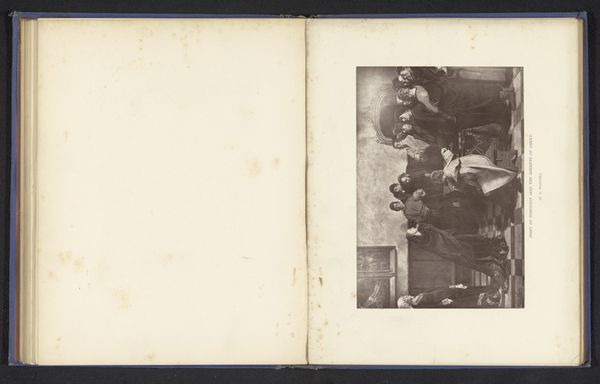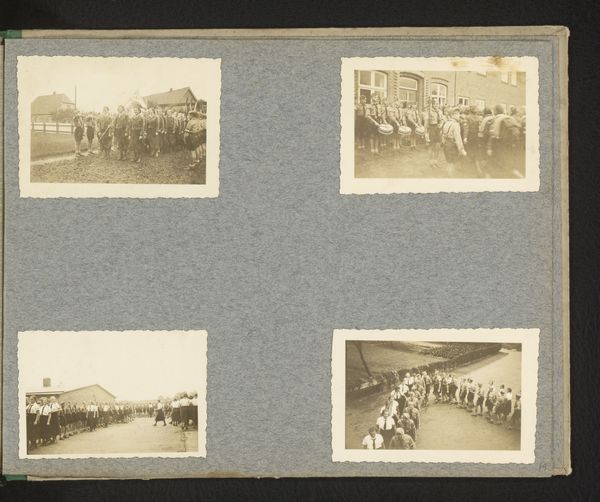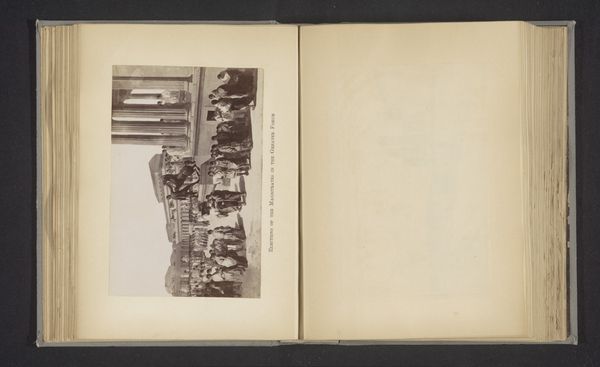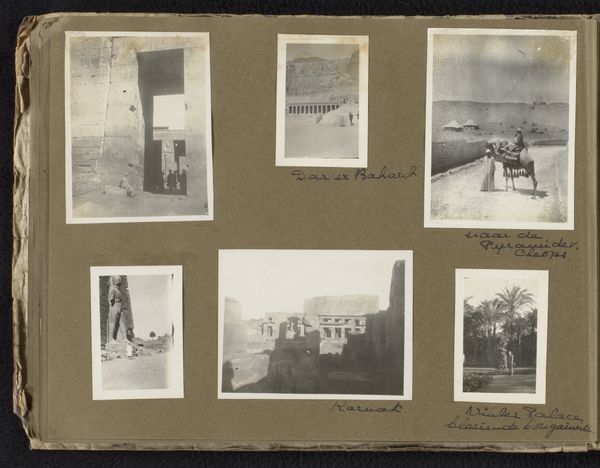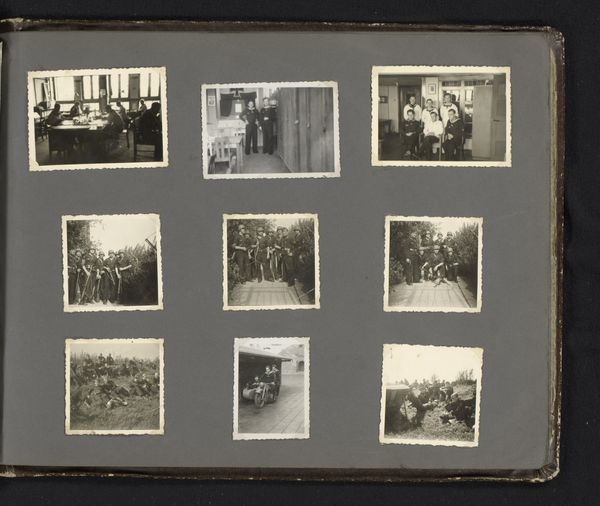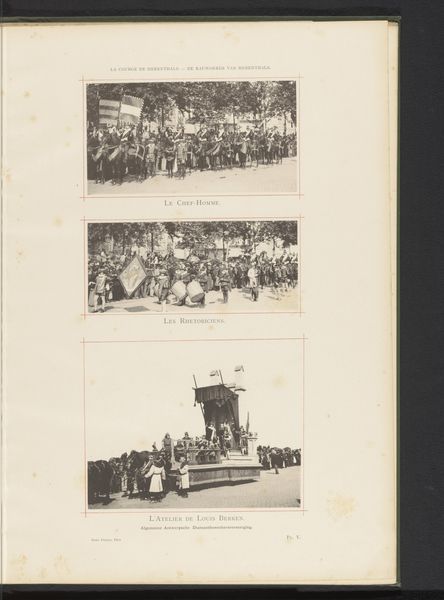
Twee prentbriefkaarten van het bezoek van koningin Wilhelmina aan Parijs Possibly 1912 - 1916
0:00
0:00
print, photography
#
portrait
#
art-nouveau
# print
#
street-photography
#
photography
#
history-painting
#
realism
Dimensions: height 90 mm, width 142 mm
Copyright: Rijks Museum: Open Domain
Curator: Here we have "Twee prentbriefkaarten van het bezoek van koningin Wilhelmina aan Parijs," a pair of postcards potentially dating between 1912 and 1916, portraying Queen Wilhelmina's visit to Paris. Editor: The sepia tones and formal composition evoke a distinct atmosphere of historical weight, almost like frozen grandeur. The rigidity feels symbolic. Curator: It’s intriguing to see royal visits documented as early street photography. One image captures the queen's carriage amidst a procession of horses and riders. The other depicts her arrival at a grand building, possibly a palace. It really blurs lines of access and what history remembers, and forgets, right? Editor: Absolutely. Carriages and horses signify not just transportation, but the power structures and social hierarchies inherent in royal processions. The repetitive motif of horses could be interpreted as a visual echo of tradition, authority, and controlled power. Curator: Contextually, Wilhelmina reigned during a time of great social change. Depictions of royal visits reinforced a sense of national pride, particularly valuable when considering factors such as burgeoning political factions and shifting geopolitical landscapes. This imagery solidified power. Editor: Yes, and notice the subtle shift from street-level exuberance in the first photograph to a posed, almost theatrical setting in the second. It’s the performative aspect of monarchy made manifest in visual symbolism. The flags and architectural splendor act as coded visual reminders of both national and personal power. Curator: It also seems crucial to view such documentation with a post-colonial lens. The staged nature reminds us who gets represented in the archives and the visual politics at play. Whose history do these postcards uphold? Editor: A provocative point. And even formally, there is value in remembering that as postcards, these images circulated, conveying messages and ideals through personal networks as easily-shared tokens of status and relationship to country. They had power beyond documentation. Curator: Indeed. Studying these postcards reveals that seemingly simple documentation offers significant insight into issues of identity, social class, and collective memory. Editor: It also invites one to consider our modern interpretations of photographs versus those of the early 20th century. Our sense of "event" is vastly altered now.
Comments
No comments
Be the first to comment and join the conversation on the ultimate creative platform.
